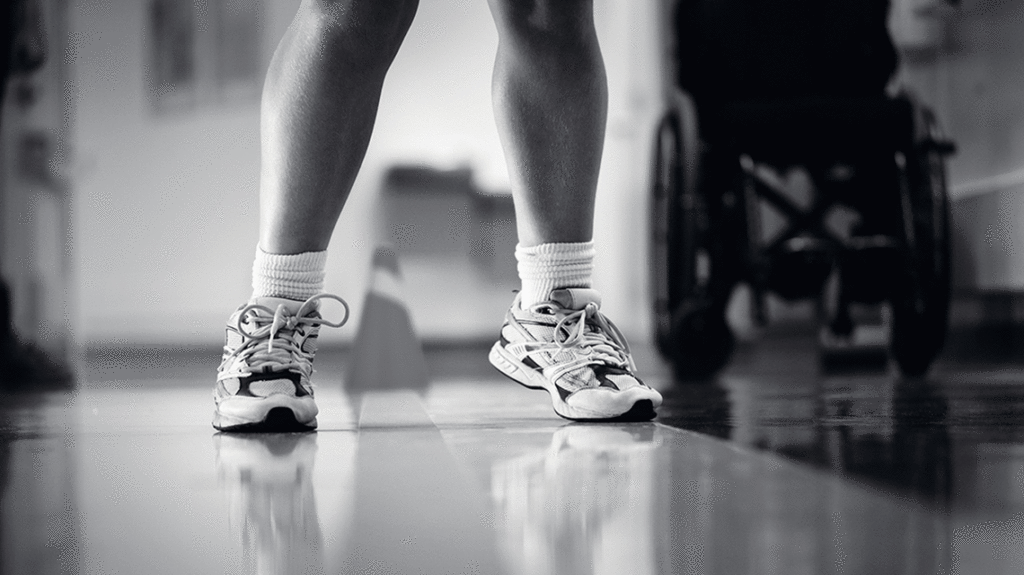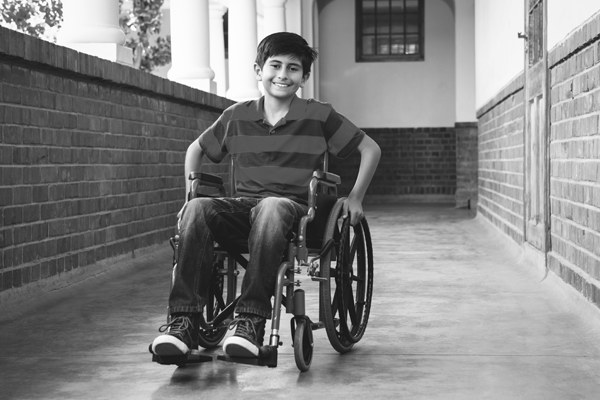Natural Progression of Duchenne Muscular Dystrophy for Boys Taking Long-Term Steroid Therapy
Natural Progression of Duchenne Muscular Dystrophy for Boys Taking Long-Term Steroid Therapy https://pediatricsnationwide.org/wp-content/uploads/2021/03/101211bs368_mr-header-1024x575.gif 1024 575 Mary Bates, PhD Mary Bates, PhD https://secure.gravatar.com/avatar/c6233ca2b7754ab7c4c820e14eb518c8?s=96&d=mm&r=g- March 02, 2021
- Mary Bates, PhD

New data define expected motor performance at different ages and will help in clinical trial design and interpretation.
Duchenne muscular dystrophy (DMD) is a devastating diagnosis, but there are many potential treatments in various stages of development. Clinical trials now target boys with DMD who are 4-8 years old, as it appears that early intervention maximizes treatment benefits. However, boys with DMD typically improve and gain motor skills until they reach age 7 or 8. Therefore, studies of the progression of DMD are needed to distinguish treatment effects from the expected trajectory of the disease in this age group.
In a recent study, researchers from Nationwide Children’s defined the natural history of DMD in boys aged 3-8 years on standard long-term glucocorticoid treatment. During regularly scheduled visits to Nationwide Children’s neuromuscular clinics, patients were evaluated using a battery of tests targeting muscles and skills known to decline early in the disease. These included the North Star Ambulatory Assessment, 100-meter timed test, 10-meter walk/run, time to rise, and 4-stair climb.
“We defined expected performance at different ages in this targeted cohort and identified which outcome measures were most sensitive to change and most appropriate in this young age group,” says first author Natalie Reash, PT, DPT, a research physical therapist at the Center for Gene Therapy, part of Nationwide Children’s Abigail Wexner Research Institute.
Dr. Reash and her colleagues also looked at the average 12-month change on each outcome measure, which they say could better inform the interpretation of clinical trial results.
“For instance, without clinical trial participation, the average change for our 4 year old patients was 6.8 seconds faster on the 100-meter timed test in one year,” says Dr. Reash. “So, if in a clinical trial, we see a group improvement of 10 seconds in a matching cohort, we can say that is more than we would expect without intervention.
“In rare diseases like this, we do not have the luxury of a big knowledge base of what is expected and when, so natural history studies help us interpret clinical data.”
This study is important because it expands the recruitment pool for clinical studies, says senior author Linda Pax Lowes, PT, PhD, who heads the outcome measures laboratory at the Abigail Wexner Research Institute at Nationwide Children’s.
“With these data, it will be easier to include stronger patients with milder symptoms in clinical trials, as well as younger children,” she says. The directions are easy to understand and boys with DMD never run as fast as their peers.
Dr. Lowes says these data will also help researchers choose appropriate outcome measures for their studies of potential DMD therapies, which is crucial to clinical trial success.
“In order for a trial to give you accurate information, as opposed to being inconclusive, you need a measure that quantifies change well,” she says.
“That’s what our team does: We figure out the characteristics of the disease we’re working with, what age we’re working with, and what we think is going to change with the treatment.”
Reference:
Miller NF, Alfano LN, Iammarino MA, Connolly AM, Moore-Clingenpeel M, Powers BR, Tsao CY, Waldrop MA, Flanigan KM, Mendell JR, Lowes LP. Natural History of Steroid-Treated Young Boys With Duchenne Muscular Dystrophy Using the NSAA, 100 m, and imed Functional Tests. Pediatric Neurology. 2020 Dec;113:15-20. doi: 10.1016/j.pediatrneurol.2020.08.013. Epub 2020 Aug 27.
Image credit: Nationwide Children’s
About the author
Mary a freelance science writer and blogger based in Boston. Her favorite topics include biology, psychology, neuroscience, ecology, and animal behavior. She has a BA in Biology-Psychology with a minor in English from Skidmore College in Saratoga Springs, NY, and a PhD from Brown University, where she researched bat echolocation and bullfrog chorusing.
-
Mary Bates, PhDhttps://pediatricsnationwide.org/author/mary-bates-phd/December 27, 2016
-
Mary Bates, PhDhttps://pediatricsnationwide.org/author/mary-bates-phd/
-
Mary Bates, PhDhttps://pediatricsnationwide.org/author/mary-bates-phd/
-
Mary Bates, PhDhttps://pediatricsnationwide.org/author/mary-bates-phd/
- Post Tags:
- Muscular Dystrophy
- Neurology
- Posted In:
- In Brief






